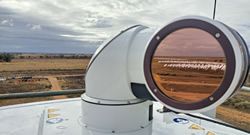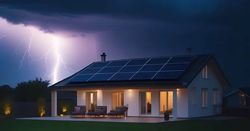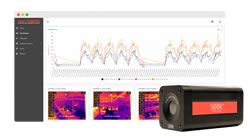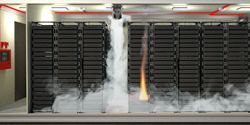Harnessing Wind Intelligence to Safeguard Solar Arrays
Seeing the storm before it arrives can mean the difference between shutdown losses and uninterrupted solar yield. Beyond rattling panels or nudging trackers out of place, the wind can quietly rack up costs and downtime and even shorten the life of critical equipment.
Setting a New Safety Benchmark for the Industry: Sungrow Achieves Success in the World's Largest BESS Fire Test
The 20MWh burn test replicated a real-world power plant fire scenario, completed under the oversight of DNV (Det Norske Veritas) experts and over 100 clients, and delivered results exceeding expectations.
The Impact of EMP Hardening on Solar Hybrid Inverters
EMPs can severely damage electronic devices and disrupt power supplies. EMP hardening offers a safeguard, especially for residential hybrid inverters like the Sol-Ark 15K-2P Whole Home hybrid inverter.
Decrease Downtime: Ergonomic Process for Healthier, More Productive Workplace
Preventing worker discomfort and addressing early signs of injury are proven to save companies time and money, all while improving worker satisfaction and reducing turnover.
The Role of Thermal Cameras in Preventing Fires in Industrial Battery Backup Systems
As more industries turn to battery backups, the potential for dangerous thermal events like overheating or fires becomes a serious concern. Thermal cameras have emerged as a game-changing technology, transforming how fire prevention is handled in battery backup systems.
Energy Storage Industry Takes Significant Steps to Lead on Safety and Support Communities
ACP published a model ordinance framework providing comprehensive guidance for state and local governments developing siting and permitting rules related to developing and operating utility-scale battery energy storage systems.
Ensuring Solar Connector Safety & Performance Through High Quality Equipment & Proper Installation
There are countless decisions one needs to make when installing a new solar power system, many of which revolve around crucial cost and quality outcomes. The end user wants to save money where they can, but also wants to be sure they're getting the highest quality.
The Construction Procurement Process, Explained
How companies organize their procurement team and the technology they choose to manage the process can make a huge difference in building project costs.
What the Renewables Industry Needs to Learn From Coal and Oil About Worker Safety
Green power installation and expansion are happening faster than standards and instruction recommendations can keep up.
How to Ensure Safety under UL 3741 - Understanding the Risks and Limitations of Some Solutions Without DC Optimization
Here SolarEdge Technologies discusses how misinterpretation of the standard in some solutions may be putting firefighters at risk, and the possible implications for the PV industry.
What Does the AIM Act Mean for Fire Suppression?
A primary purpose of the AIM Act is to reduce the release of HFCs into the environment. HFCs are powerful greenhouse gases that are contributing to global warming.
"Let-It-Burn" is not an Effective Fire Suppression Solution for Battery Energy Storage Systems
The standards are not crystal clear and have left some with the impression that it is acceptable just to let a BESS fire burn itself out-the "let-it-burn" method-without providing any fire suppression measures.
Three Reasons to Avoid Self-Integration of Battery-based Energy Storage Systems
In our latest blog, our experts share some valuable insights on why avoiding self-integration of battery-based energy storage systems is the best approach for long-term success.
Fire Suppression in Battery Energy Storage Systems
Any time a large amount of energy is squeezed into a tight space, there is a risk that it will escape in an uncontrolled manner. When this happens, fire is a common result and explosions are possible.
Maintenance and Safety Considerations for Home Energy Storage Systems
Home energy storage systems, also known as home battery systems, have become increasingly popular in recent years as a means of storing excess energy generated by renewable sources such as solar panels.
Records 1 to 15 of 33
Featured Product

Terrasmart - Reduce Risk and Accelerate Solar Installations
We push the limits in renewable energy, focusing on innovation to drive progress. Pioneering new solutions and ground-breaking technology, and smarter ways of working to make progress for our clients and the industry.










.png)




